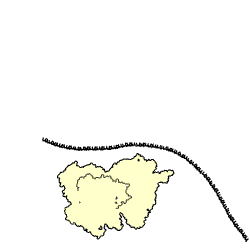Amino Acid Properties
- gerben voshol

- Oct 25, 2021
- 3 min read
Updated: Nov 27, 2021
The structure and function of proteins is determined by their amino acid composition and their physico-chemical properties. In this short post, I describe 20 proteinogenic amino acids and provide a simple cheatsheet with an overview of their properties.
While working with different enzymes, I always ask myself the question whether a particular amino acid is important for that enzyme's function or structure and whether a change to that amino acid is damaging to its function? To understand the function of an amino acid, it is useful to know what the different properties of amino acids are and what properties are shared between them. So, here I would like to share with you my diagram which gives a quick and simple overview of the most important amino acids and their properties.
Grouping of amino acids
As we know, proteins and peptides are build from various amino acids, which are linked together by the ribosome during a process called translation. There are 22 proteinogenic amino acids out of which 20 are encoded by the standard genetic code. All amino acids have common elements, such as an amine group (N-terminal group in proteins), a carboxyl group (C-terminal group in proteins) and a side chain.
There are many groupings available, but in general these groupings are based on the side chain. The side chain can have various functional groups which give each amino acid distinct physical properties that influence the final protein, it's structure and function. Here is one of these groupings that I made myself and wanted to share with you. It is a Venn diagram which is based on several amino acid characteristics such as size, charge, hydrophobicity, etc.

The more similar the characteristics are, the closer the amino acids are located in the diagram and therefore they are less likely to disrupt protein function when substituted. For example, hydrophobic alpha helices, such as those found in signal peptides, may contain a combination of valine, leucine and isoleucine which are all grouped together. Replacing either of these acids with one from the distant groups (for example, the charged aspartic or glutamic acid) will result in a non-functional signal peptide, while a substitution with a methionine can influence the protein properties, but not its functionality.
As you may notice, in this venn diagram glycine is indicated twice. This is not a mistake, it is just because amino acid glycine is a little bit "strange". In general, glycine is considered to be a hydrophobic amino acid. Hydrophobic amino acids are usually located inside a protein, but glycine is actually found mainly on the outside of an helix (known as solvent exposed). Moreover, it doesn't really have a side chain. Therefore it is also placed outside of the hydrophobic group in the diagram.
Another "strange" amino acid is proline, which is found often in the loops of proteins where it helps in maintaining a certain fold. Because glycine and proline play such a unique role in protein structure, they are often conserved within protein families.
In short, amino acids within the same group are more often substituted for each other and the amount of set boundaries that one has to cross to get from one amino acid to another is inversely correlated with the likelihood of such an substitution occurring. If you would like to learn more about protein design and how to engineer your protein for specific applications, please leave a question or comment and I will prepare a series of posts revealing some of the practical insights into this topic.



Comments